The Intel SSD 320 Review: 25nm G3 is Finally Here
by Anand Lal Shimpi on March 28, 2011 11:08 AM EST- Posted in
- IT Computing
- Storage
- SSDs
- Intel
- Intel SSD 320
It's called the Intel SSD 320, but the part number should give away just what we're looking at here:
This is the long awaited third generation Intel based SSD. This is the G3. And at this point it's around 6 months late.
Back then it was simply called the Postville Refresh on Intel's roadmaps (Postville was the 34nm Intel X25-M G2). It would use 25nm Intel NAND, feature improved performance and full disk encryption - all behind a 3Gbps SATA interface.
When I spoke with Intel about the drive last year, all indications pointed to it being faster than drives based on SandForce's SF-1200 controller. And it is:
| Intel SSD 320 300GB vs. Corsair Force F120 | ||||
| AT Storage Bench 2011 (Heavy) | AT Storage Bench 2011 (Light) | |||
| Corsair Force F120 | 120.1 MB/s | 155.9 MB/s | ||
| Intel SSD 320 300GB | 132.8 MB/s | 161.7 MB/s | ||
Without turning to any real time compression/deduplication techniques, Intel has built a drive that's faster than the SF-1200. You also get that famed Intel SSD reliability:
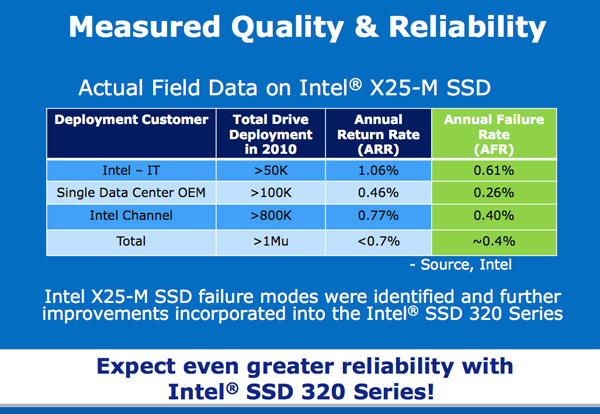
There's just one issue. The SF-1200 was the king of 2010. This year is shaping up to be all about the SF-2200 and the G3 isn't quite as competitive there. Intel realized this as well and thus we got the Intel SSD 510 to address the high performance market. Intel claims the 510 should have the same failure rate as the 34nm X25-M G2 at ~0.6% per year.
The Intel SSD 320 by comparison is aimed at the mainstream market. Remember that's what the M in X25-M always stood for to begin with. As a result we get lower pricing:
| Intel SSD Comparison | ||||||||||||
| X25-M G2 160GB | Intel SSD 320 40GB | Intel SSD 320 80GB | Intel SSD 320 120GB | Intel SSD 320 160GB | Intel SSD 320 300GB | Intel SSD 320 600GB | SSD 510 120GB | SSD 510 250GB | ||||
| User Capacity | 149GB | 37GB | 74GB | 111GB | 149GB | 279GB | 558GB | 111GB | 232GB | |||
| Random Read Performance | Up to 35K IOPS | Up to 30K IOPS | Up to 38K IOPS | Up to 38K IOPS | Up to 39K IOPS | Up to 39.5K IOPS | Up to 39.5K IOPS | Up to 20K IOPS | Up to 20K IOPS | |||
| Random Write Performance | Up to 8.6K IOPS | Up to 3.7K IOPS | Up to 10K IOPS | Up to 14K IOPS | Up to 21K IOPS | Up to 23K IOPS | Up to 23K IOPS | Up to 8K IOPS | Up to 8K IOPS | |||
| Sequential Read Performance | Up to 250MB/s | Up to 200MB/s | Up to 270MB/s | Up to 400MB/s (6Gbps) | Up to 500MB/s (6Gbps) | |||||||
| Sequential Write Performance | Up to 100MB/s | Up to 45MB/s | Up to 90MB/s | Up to 130MB/s | Up to 165MB/s | Up to 205MB/s | Up to 220MB/s | Up to 210MB/s (6Gbps) | Up to 315MB/s (6Gbps) | |||
| Price | $404 | $89 | $159 | $209 | $289 | $529 | $1069 | $284 | $584 | |||
It's still early in the 25nm ramp, but the 25nm Intel SSD 320 is cheaper than the 34nm Intel SSD 510. The only issue is that OCZ is very competitive with its pricing as well and compared to the Vertex 2, Intel's SSD 320 isn't really any cheaper. Intel likes to maintain its 65% profit margins so even though it makes the NAND and the controller in the 320, we're unlikely to see these drives drop below competitive pricing.
Intel expects the 25nm SSD 320 to be even more reliable than the 510 or X25-M.
The Same Controller
The Intel SSD 320, like the 310 and X25-M before it, uses an Intel branded controller. Opening up the 320 reveals a near identical controller to what we saw in the 34nm X25-M G2 housing:
You'll notice the part number is identical to 2009's X25-M G2 controller. In fact, it's the same controller. Apparently the G2 controller had a number of features on-die, but not implemented in firmware. Things like full disk encryption and NAND redundancy never made it out in G2 but are here in the 320 all thanks to new firmware. And no, G2 owners aren't getting it.
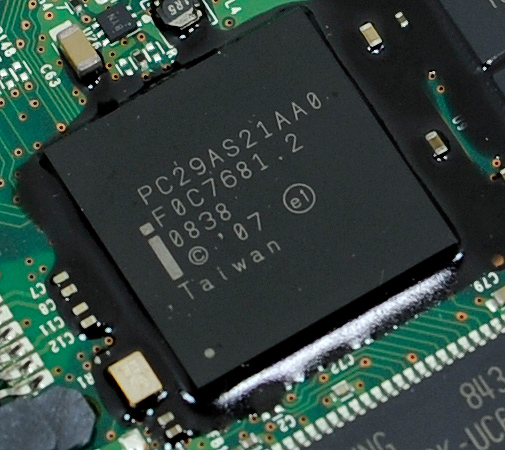
Intel's X25-M G1 Controller
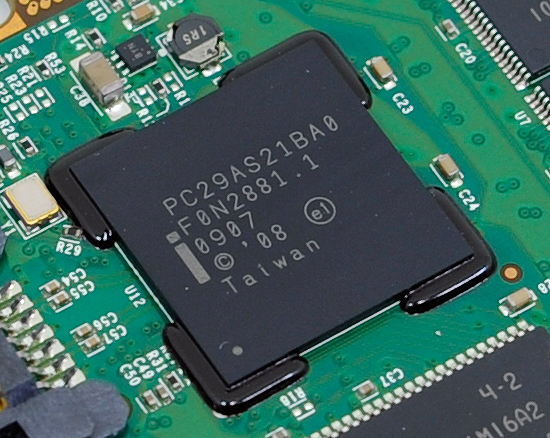
Intel's X25-M G2 Controller
Since the controller hasn't changed, the basic architecture of the SSD hasn't changed either. Intel still doesn't store any user data in its external DRAM cache and there's still a 256KB on-die SRAM.
Next to the Intel controller is a 64MB 166MHz SDRAM device, now made by Hynix. You'll notice that the DRAM chip is a lot smaller than what we've seen in previous X25-M generations, despite growing in capacity. Intel actually turned to mobile SDRAM for use in the SSD 320 to help save on power. While the X25-M G1 and G2 both used a conventional 3.3V SDRAM device, Intel moved to a 1.8V mobile SDRAM chip with the 320.
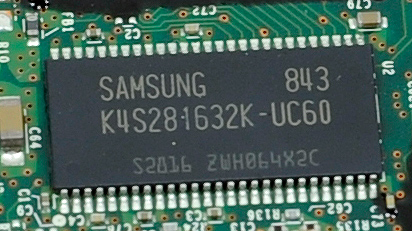
Intel X25-M G1: 16MB 166MHz SDRAM
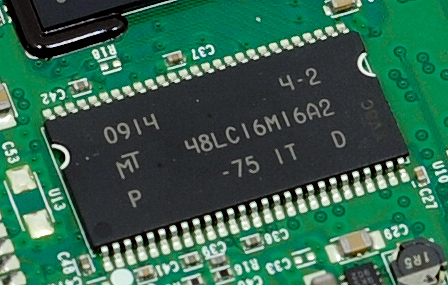
Intel X25-M G2: 32MB 133MHz SDRAM
Intel always prided itself on not storing any user data in its DRAM cache. The external DRAM is only used to cache mapping tables and serve as the controller's scratchpad. In the event of a sudden loss of power, Intel only has to commit whatever data it has in its SRAM to NAND. To minimize the amount of data loss in the event of a sudden power failure, Intel outfitted the SSD 320 with an array of six 470µF capacitors in parallel.
We've seen large capacitors on SSDs before, primarily the enterprise SandForce drives that boast a 0.09F supercap. Intel claims that for its design a single large capacitor isn't necessary given the minimal amount of data that's cached. It further claims that an array of multiple capacitors in parallel allows for much better reliability - if one capacitor fails the array is still useful (vs. a single point of failure in the case of the supercap).



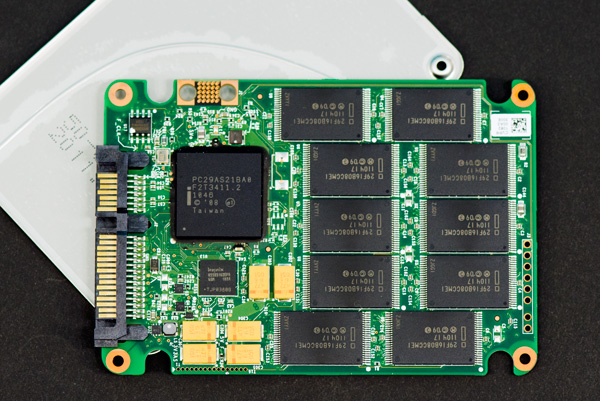
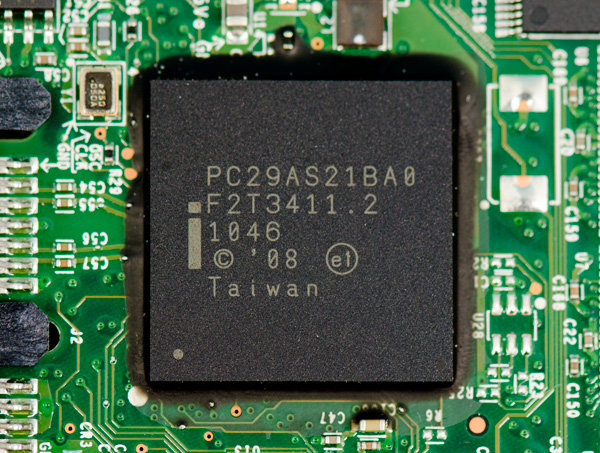
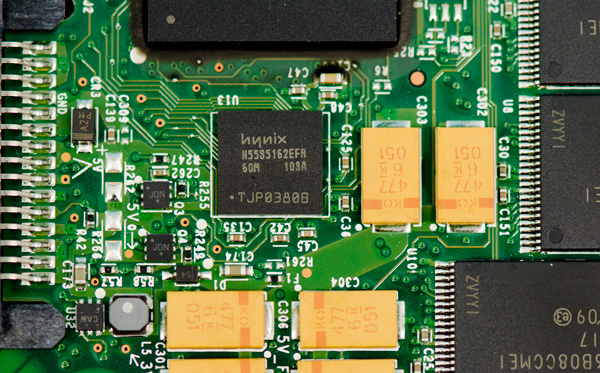









194 Comments
View All Comments
Drag0nFire - Monday, March 28, 2011 - link
I have read with interest the comments in previous SSD articles. Actually, though, I am specifically interested in the longevity characteristics of this drive being discussed today. I was surprised to see no mention in the article.If the longevity of the Intel SSD 320 has been discussed previously, I apologize for wasting your time.
Anand Lal Shimpi - Monday, March 28, 2011 - link
The 320 (as well as Crucial's m4) arrived while I was away at CTIA last week - I got back Friday morning. That gave me a minimal amount of time to get everything tested before today's NDA. As a result, about five pages got cut out of the 320 review - one of them talked about write amp and exactly what you're asking for. Soon :)Take care,
Anand
Drag0nFire - Tuesday, March 29, 2011 - link
Thanks so much. You guys are the best!Mr Perfect - Monday, March 28, 2011 - link
I'm surprised no one has mentioned the Crucial M4 (AKA C400?) numbers in the benchmarks. Is this old news, or did they just slip in there without anyone noticing. :)Termie - Monday, March 28, 2011 - link
Intel is sending around $530 300GB drives to bench against the current crop of $200 120GB drives. As Anand rightly pointed out, the 300GB drive has completely different specs than the smaller drives. Unlike SandForce, which seems to provide similar performance across sizes, Intel's new drives cannot substitute for each other in performance.I'm guessing very few people will actually buy a $530 drive at this point (even $450 was a hard sell a year ago for the 160GB G2). There are just too many $200 alternatives, and these probably significantly outperform Intel's $200 G3.
crimson117 - Monday, March 28, 2011 - link
I wish the article was a little more clear about this - the first comparison mentioned is "Intel SSD 320 300GB vs. Corsair Force F120 [120GB]" and Anand immediately concludes that it proves the Intel Controller is faster.crimson117 - Monday, March 28, 2011 - link
Note Ryan's comment in another thread:"Both the 120GB Vertex 2 and 300GB i320 are fully populated - each has all of their NAND channels in use. Intel does have a lane count advantage (10 vs. 8), but that's a design difference rather than how the SSD is populated. Thus on an architectural level it's fair to compare the controllers, as we're looking at the performance of both when they're fully populated and the architecture is not unnecessarily bottlenecked.
"Now at equal capacities this wouldn't necessarily be the case. Intel did not provide us with a smaller SSD, which is why Anand said "We also don't have a good idea of how much slower the smaller capacity drives perform in our benchmarks at this point.". It's safe to assume a 120GB i320 won't be fully populated and that it will have lower performance as a result. How much? We don't know."
tonyn84 - Monday, March 28, 2011 - link
Man, I was waiting for these to come out before trying to pick up a larger drive but there's no cost benefit. The 256gb C300 is starting to look very good, going to keep an eye on those prices now.crimson117 - Monday, March 28, 2011 - link
Anand,"all indications pointed to it being faster than drives based on SandForce's SF-1200 controller. And it is..."
Is it really fair to put a 300GB Intel 320 drive against a 120GB SF-1200 drive and conclude the Intel's new controller is faster?
My understanding is that larger SSD's generally perform faster than smaller SSD's, particularly in Write operations, because they have more NAND to write across at once.
How would the 120GB model Intel 320 stand up to a Vertex 2 120GB, when it doesn't have the NAND chip quantity advantage?
Thanks,
crimson117
crimson117 - Monday, March 28, 2011 - link
EDIT: I just saw this on the final page."We also don't have a good idea of how much slower the smaller capacity drives perform in our benchmarks at this point."
That should be mentioned as a caveat on the first page's "Intel SSD 320 300GB vs. Corsair Force F120 [120GB]" comparison chart (if you even keep that chart at all). That chart really doesn't provide a useful comparison when you consider the size advantage of the Intel drive.